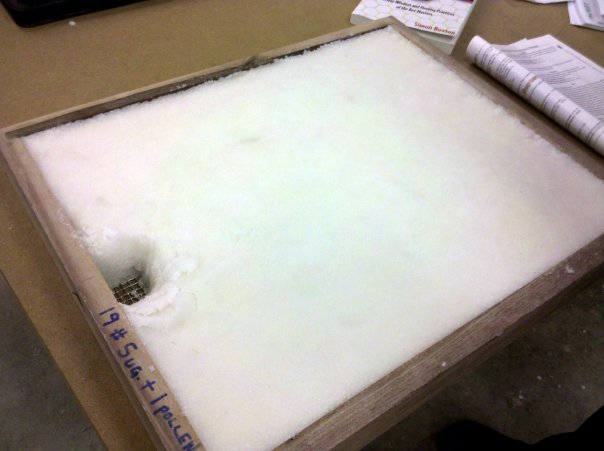Submitted by J. Morgan
SIBA talks a LOT about candy boards. So much, that we learn more each year and have slight revisions based on the knowledge gleaned over years of using them. The first video embedded below is an updated video on making candy boards. It covers more of the specifics on making the candy board and also makes some corrections, specifically in the area of NOT adding pollen to your candy board early on. Plan to come back in Jan/Feb to add your pollen so we don't stimulate brood-rearing too soon. The second video below was made back in 2010 and talks a lot about making the candy board frame itself before getting into making the board. Both are worth the watch!
We think a candy board is a kind of like a cheap insurance policy. The benefits of a candy board, made correctly adds many benefits to help the beehive over the winter. The candy board is simply a hardened sugar mixture that lives in a 2-3 inch frame body and has hardware cloth on the bottom to hold the "candy" up.
Let's consider some benefits:
- If the bees deplete all the honey stores, they hit the candy board and this may help feed them for the remainder of the winter, or at least until you look in the hive again.
- Condensation is a big concern in the hive. Cold air outside and warm bees inside make moisture. This moisture can collect on the top of the hive. The candy board will absorb most, if not all the moisture into the sugar and likely keep it from dropping back down on to the cluster. Wet bees will die.
- There is also a hole that passes up through the candy board and a 5/8 inch hole is drilled through the front. See the pictures and the video. This allows warm humid air from inside the hive to exit out this hole to prevent condensation in the hive.
To us, these benefits alone merit putting a candy board on the top of each hive. Take a minute to watch the video to see how you can make your own candy board. Here's the recipe.
- 15-16 lb. of sugar
- ~3 cups water
- 1 tsp. plain white vinegar (optional)
- 1 tsp. Honey B Healthy (optional)
If you choose to use the vinegar (as a mold inhibitor) and HBH, add to the water and stir before adding to sugar.
Pour sugar into a very large container and gradually add about half the water, stirring to wet the sugar well. Continue adding and mixing water until all the sugar is cakey, but not runny.
Put newspaper or waxed paper under your candy board, and fill with sugar. Screen the sugar off level with the top of the board. Allow to harden overnight.
Put the candy board on later in the season... when it's mostly cold and the bees don't want to break cluster. This may make the board last into the cold times when they need it most. Adding too early, you'll find the bees will eat the sugar on any given warmer day. The idea is to have this available for them closer to spring when it's possible they are running low on natural honey stores.
To add the board to your hive, remove the inner cover from the hive, and replace with candy board, screen side down. Replace the outer cover. You can easily raise the outer cover on warmer days during the winter and slip in additional sugar bricks if you need them.




27 Responses